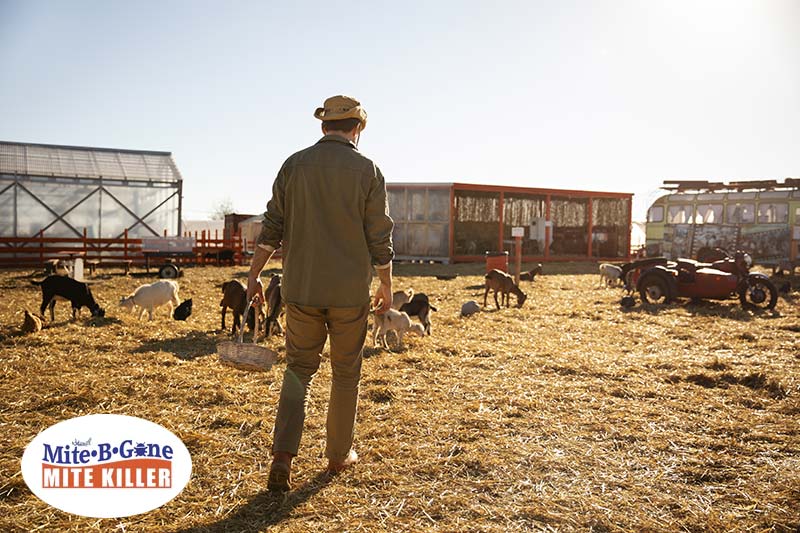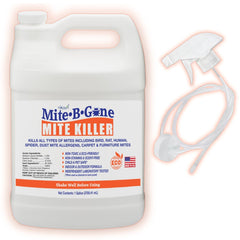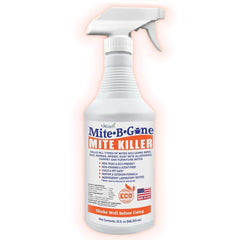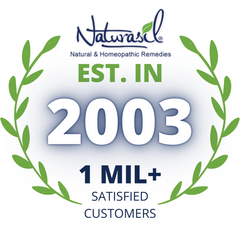Introducción
Las infestaciones de ácaros en animales de granja pueden suponer un gran reto para los agricultores y cuidadores. Estos diminutos arácnidos no solo causan molestias y problemas de salud al ganado, sino que también pueden afectar la productividad y la rentabilidad general de la explotación. En este artículo, exploramos opciones de tratamiento asequibles y seguras para controlar las poblaciones de ácaros en animales de granja, garantizando su bienestar y manteniendo la viabilidad económica de la explotación.
Comprensión de los ácaros en los animales de granja
Antes de profundizar en los tratamientos, es fundamental comprender qué son los ácaros y cómo afectan a los animales de granja. Los ácaros son pequeños arácnidos emparentados con las garrapatas y las arañas. Proliferan en diversos entornos y pueden causar diversos problemas en los animales de granja, como sarna, escabiosis y otras afecciones cutáneas. Estas infestaciones pueden provocar irritación, caída del pelo, disminución del aumento de peso y, en casos graves, enfermedades sistémicas.
Identificando el problema
El primer paso para un manejo eficaz de los ácaros es la identificación precisa. Los ganaderos deben estar atentos a signos de infestación de ácaros, como rascado excesivo, lesiones cutáneas, costras y cambios en el comportamiento de los animales debido a molestias en casos graves. La consulta veterinaria es crucial para un diagnóstico preciso y para descartar otras causas de irritación cutánea.
Opciones de tratamiento seguras y asequibles
- Tratamientos químicos
- Ivermectina: Un tratamiento antiparasitario ampliamente utilizado, eficaz contra diversos ácaros. Puede administrarse por vía oral, tópica o inyectable. Sin embargo, es fundamental usarlo con precaución para prevenir el desarrollo de resistencias.
- Selamectina: Otro antiparasitario eficaz contra los ácaros, disponible en solución tópica. Es seguro para la mayoría de los animales de granja y tiene la ventaja adicional de ser eficaz contra otros parásitos.
- baño de azufre y cal: Un tratamiento antiácaros clásico pero eficaz. Se mezcla con agua y se usa como baño o aerosol. Aunque tiene un olor fuerte y puede ser molesto, es muy eficaz y seguro.
- Tratamientos naturales
- Mite-B-Gone: Con diferencia la opción más segura, utilizando únicamente ingredientes naturales y utilizado más de 1 millón de veces en los últimos 20 años. Seguro para usar en aves, reptiles, hámsters, pollos, conejos, gatos, perros, etc.
- Tierra de diatomeas: Este es un polvo natural, no tóxico, que deshidrata y daña físicamente a los ácaros cuando se espolvorea sobre los animales y su ropa de cama.
- Aceite de neem: Este es un aceite natural con propiedades insecticidas. Se puede diluir y rociar sobre animales, aliviando los ácaros y siendo suave con la piel.
- Aceites esenciales: Ciertos aceites esenciales, como el de eucalipto o el de árbol de té, repelen eficazmente los ácaros y previenen la irritación de la piel cuando se diluyen.
- Gestión ambiental
- Limpieza regular: La limpieza y desinfección periódica de los establos, las camas y las áreas de alimentación puede ayudar a reducir las poblaciones de ácaros. Para tratamientos más extensos, consulte nuestra Mite-B-Gone de 1 galón Tratamiento contra ácaros.
- Poner en cuarentena a nuevos animales: Los animales nuevos deben ser puestos en cuarentena y revisados para detectar ácaros antes de integrarlos con el resto del rebaño.
- Controlar el acceso de animales salvajes: Los animales salvajes pueden ser portadores de ácaros. Controlar su acceso a los establos y al alimento puede ayudar a reducir la infestación.
Implementación de un plan de tratamiento
Una vez elegida la opción de tratamiento, es crucial implementarla eficazmente. En el caso de los tratamientos químicos, es fundamental seguir con precisión las instrucciones de dosificación y administración. Con los tratamientos naturales, la aplicación regular puede ser necesaria para su eficacia. Las rutinas de mantenimiento de la explotación agrícola deben integrar continuamente estrategias de gestión ambiental.

Monitoreo y seguimiento
Tras el tratamiento, es necesario un seguimiento continuo para garantizar su eficacia y prevenir la reinfestación. Es fundamental realizar controles sanitarios regulares a los animales, detectar cualquier signo de ácaros y mantener un entorno limpio.
Implementación del programa de control de Mite-B-Gone en la granja
Desarrollo de un plan estratégico
Un plan estratégico para el control de ácaros comienza con una evaluación exhaustiva de la situación actual de la granja, incluyendo los tipos y la extensión de las infestaciones de ácaros sufridas anteriormente. El plan debe incorporar:
- Identificación de zonas de alto riesgo:Reconocer áreas de la granja más susceptibles a infestaciones de ácaros, como camas, zonas de alimentación y áreas con alta densidad de animales.
- Selección de tratamientos adecuados:Elegir una estrategia eficaz tratos Es fundamental combatir los ácaros específicos presentes, garantizando al mismo tiempo la seguridad de los animales y los trabajadores agrícolas. Esto puede incluir una combinación de tratamientos químicos, remedios naturales y controles biológicos.
- Medidas preventivasLa implementación de estrategias preventivas, como la limpieza y desinfección periódicas de los espacios donde viven los animales, la gestión adecuada de los desechos y el mantenimiento de una salud animal óptima a través de la nutrición y el cuidado, es crucial para un control eficaz de los ácaros en la granja.
Aplicación práctica y seguimiento
Para una implementación exitosa se requiere:
- Capacitación para el personal agrícola:Asegurarse de que todas las personas involucradas en el cuidado de los animales conozcan los signos de infestación de ácaros, la aplicación correcta de los tratamientos y las precauciones de seguridad.
- Aplicación regular de tratamientos:Es fundamental establecer un calendario de aplicaciones de los tratamientos, teniendo en cuenta el ciclo de vida de los ácaros y la frecuencia recomendada de los tratamientos elegidos.
- Monitoreo y Documentación: Mantener registros de las aplicaciones de tratamientos, los niveles de infestación y cualquier efecto secundario observado en los animales. Estos datos son cruciales para evaluar la eficacia de las medidas de control.
La importancia de la revisión periódica
Un programa de control de ácaros no es un plan estático; requiere evaluación y adaptación continuas:
- Evaluación de la eficacia:Revise periódicamente los datos recopilados para determinar si las estrategias actuales están reduciendo eficazmente los niveles de ácaros.
- Adaptación a los cambios:Estar preparado para ajustar el programa en respuesta a cambios tales como nuevas especies de ácaros, alteraciones en las prácticas agrícolas o patrones de resistencia cambiantes en los ácaros.
- Aprendizaje y mejora continua:Mantenerse informado sobre los últimos avances en el control de ácaros e integrar nuevos conocimientos y técnicas en el programa.
Al abordar el control de los ácaros con una estrategia integral y dinámica, los agricultores pueden gestionar eficazmente estas plagas, protegiendo la salud y la productividad de sus animales.Este enfoque no sólo aborda las infestaciones actuales, sino que también reduce la probabilidad de brotes futuros, lo que contribuye a la sostenibilidad y eficiencia general de la granja.
Conclusión
Las infestaciones de ácaros en animales de granja son un problema controlable con el enfoque adecuado. Tratamientos seguros y asequibles, que abarcan desde remedios químicos y naturales hasta estrategias de gestión ambiental, pueden controlar eficazmente las poblaciones de ácaros. La clave está en identificar el problema a tiempo, elegir el tratamiento adecuado e implementarlo eficazmente. El monitoreo regular y las medidas preventivas son igualmente importantes para garantizar la salud y la productividad de los animales de granja.
Como agricultores y cuidadores de animales, el bienestar de nuestros animales es nuestra máxima prioridad. Al adoptar estrategias eficaces de control de ácaros, podemos garantizar que nuestros animales se mantengan sanos y productivos, contribuyendo positivamente al éxito general de nuestras operaciones agrícolas. Le animamos a explorar más a fondo las estrategias eficaces de control de ácaros. Tratamiento de ácaros para el ganado.
Productos como Mite-B-Gone Ofrecemos soluciones innovadoras que pueden ser parte integral de su estrategia de manejo de ácaros. Al mantenernos proactivos y contar con las herramientas y el conocimiento adecuados, podemos garantizar la salud y el bienestar de nuestros animales de granja, contribuyendo así a una práctica ganadera más productiva y sostenible. Demos juntos este paso hacia un futuro más saludable y libre de ácaros para nuestro ganado.






